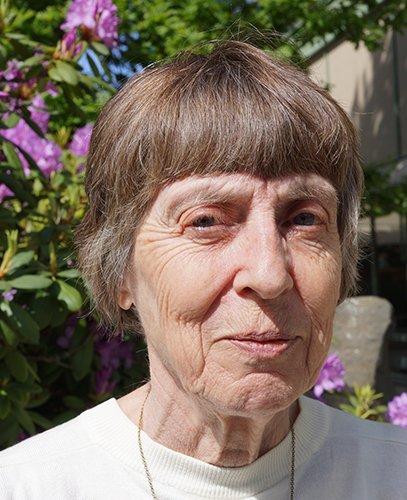- Home
- News and events
- Find news
- Karna Lidmar-Bergström appointed honorary doctor
Karna Lidmar-Bergström appointed honorary doctor
Geographer Karna Lidmar-Bergström has been appointed an honorary doctor at the Faculty of Science.
How does it feel to be an honorary doctor?
“It’s great!”
What is your research about?
“Since I’ve been retired for several years, this mainly relates to what I did earlier. I’ve been involved in the relationship between the surface of primary rock and the sedimentary bedrock covering, mainly from the period beginning 540 million years ago. When it comes to denudation (how bedrock is broken down through erosion and weathering), I have identified three different types in today’s relief and drawn conclusions about the movements of bedrock during this period. This is nothing geologists are researching today, either internationally or nationally. We have had a unique and long tradition in the area in Sweden, which it’s important to make the most of, not only for research but also for society.”
What are the challenges in your research area?
“Researchers often use models and basing them on field investigations is not always easy. We set up hypotheses and make measurements, but it’s difficult to relate to everything we already know. Nowadays, researchers in my field rarely make new surveys and maps. There is also boundless information, making it difficult for young researchers to familiarise themselves with what we already know, especially in regional geography. The regional aspect, which is the basis of my research, is still important – such as for courses in geology and geomorphology (the study of the physical features of the earth’s surface).”
What can society learn from your research?
“Among other things, it has importance for the safekeeping of nuclear fuel. In spring Mats Olvmo, from the Department of Earth Sciences, and I are going to carry out an excursion in parts of Västergötland and Bohuslän for a team that is writing about the inland ice sheet’s erosion in the Forsmark area. My research is also relevant for the development of high-speed railways. The railway line between Lund and Hässleholm will traverse an area with abundant occurrences of kaolin weathering (which is a type of clay weathering) in the primitive rock surface, because this was exposed about 220–210 million years ago in a hot and moist climate. After being covered for a long time, the primitive rock surface has been exposed again and many kaolin remnants are still present in the primitive rock surface. My research also shows that there was a lot of movement during the Tertiary period, which was 23–2.6 million years ago. For example, the Southern Swedish Dome was elevated, giving rise to what we call the southern Swedish highlands. Studies also reveal that the inland ice sheet’s erosion has not removed the various denudation surfaces.”
Explanatory statement:
Karna Lidmar-Bergström has made significant contributions in developing methods for the analysis of primary rock’s large-scale land forms in relation to the younger sedimentary bedrock of the Southern Swedish Dome as a model area, and through the study of remnants of preglacial weathering coverings, she has convincingly demonstrated the significance of deep weathering for landscape development. The latter has taken place in a fruitful collaboration with the Department of Earth Sciences, University of Gothenburg, through supervision and research collaboration. Karna Lidmar-Bergström’s focus on the importance of knowledge about geomorphology in society, exemplified by a large number of education and outreach articles and in recent years by editorials in daily press, should also be noted.
Mats Olvmo will be hosting Karna Lidmar-Bergström during the conferment ceremony on 19 October. Prof. Katarina Abrahamsson from the Department of Marine Sciences will be presenting the honorary doctor.